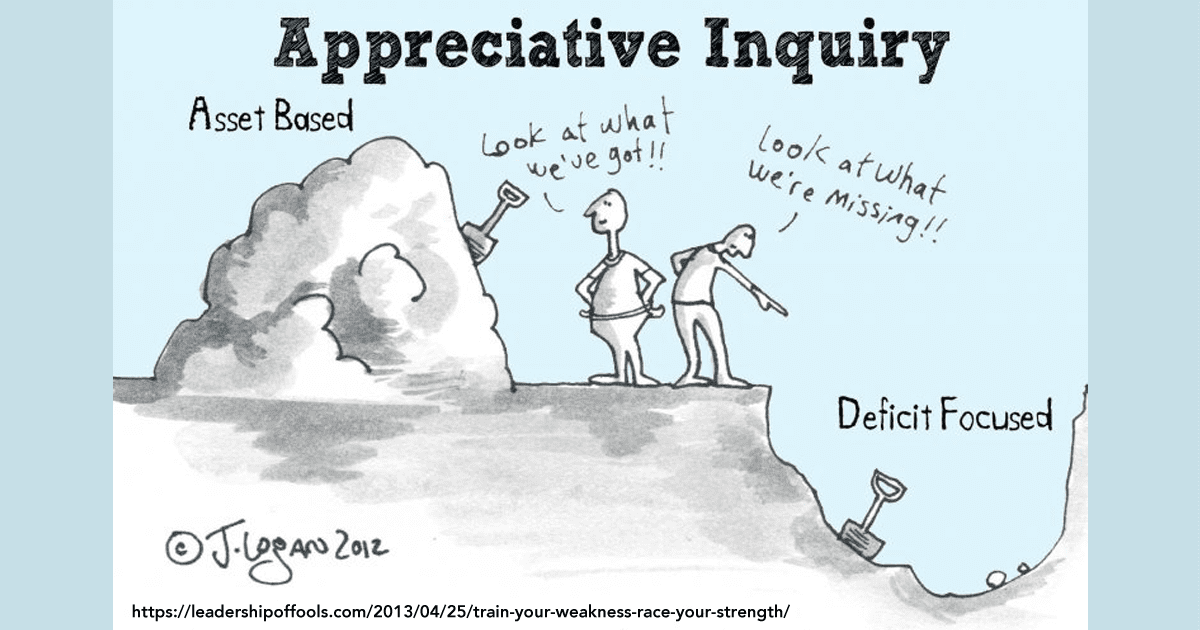Appreciative Discernment and Vincentians
 During the three weeks of the 42nd General Assembly of the Congregation of the Mission the delegates will frequently employ a method called Appreciative Discernment (AD) or appreciative inquiry (AI). The material following the definition of AD/AI is adapted from a document distributed to the elected members of the Assembly. I suspect this process and the questions that follow are relative to other branches of the Vincentian Family and the Church in general.
During the three weeks of the 42nd General Assembly of the Congregation of the Mission the delegates will frequently employ a method called Appreciative Discernment (AD) or appreciative inquiry (AI). The material following the definition of AD/AI is adapted from a document distributed to the elected members of the Assembly. I suspect this process and the questions that follow are relative to other branches of the Vincentian Family and the Church in general.
Appreciative Inquiry (AI) was pioneered in the 1980s by David Cooperrider and Suresh Srivastva, two professors at the Weatherhead School of Management at Case Western Reserve University. AI consultants around the world are increasingly using an appreciative approach to bring about collaborative and strengths-based change in thousands of profit and nonprofit organizations and communities in more than 100 countries.
Appreciative Inquiry is a way of being and seeing. It is both a worldview and a process for facilitating positive change in human systems, e.g., organizations, groups, and communities. Its assumption is simple: Every human system has something that works right–things that give it life when it is vital, effective, and successful. AI begins by identifying this positive core and connecting to it in ways the heighten energy, sharpen vision, and inspire action for change. As AI consultant Bernard J. Mohr says, “Problems get replaced with innovation as conversations increasingly shift toward uncovering the organization’s (or group’s, or community’s) positive core.” (from the Center for Appreciative Inquiry)
Here are some examples of appreciative discernment questions:
- Describe a time in the life of your province which you considered a highpoint, when the confreres were most engaged and felt most alive and creative.
- What do you most value about yourself and your ministry? What are the gifts with which God has blessed you for your service of the poor?
- What are the dynamics/factors at work in your province when it is at its best?
- Imagine your province ten years from now, when everything is just as you wish it would be. What is different from how it is now? How have you contributed to this dream?
How does AD Lead to Positive Change?
AD calls us to shift from problem solving to a positive analysis of what lies at the heart of our Vincentian charism and mission. In this way, it does not do a SWOT (Strengths/Weaknesses/Opportunities/Threats) Analysis, but rather seeks to unearth the root causes of our strengths as a Vincentian Family group. The process, though simple, can lead to profound changes in the life of the group from an individual to the international leadership. An outline of this process follows.
I. Discovery: appreciating and valuing the best of “what is”
The starting point involves the affirmation of “best practices” that exist throughout the particular group or branch. We unveil our positive core, recognizing how God has blessed us. This is the most important step in the process because it focuses us on the future that we hope to create together as a branch. We have many instances of best practices throughout the world.
Discovery explores what gives us life and zeal for the Mission.
“A foundational belief that guides us is that our God will never leave us orphaned … Our mission is defined and fulfilled when we fully bring the charism that we have received to the Church and the world” (Nordenbrock, p. 5).
II. Dream: envisioning what “might be”
As we study our best practices, we ask how we can build upon them and make them the “new norm” for our life as a Family branch. What might be? What would we look like if our communities or conferences or groups embraced these practices on the local, regional, and interntional levels? What are the signs of the times and the voices of the poor calling us to be and to do? What is the world calling from us? By imagining our best possible future, we also acknowledge the work of grace in our lives.
III. Design: dialoging about what “should be”
What are the concrete steps that we can take, based on our strengths, to enable these new norms to become part of the fabric of our life as a Vincentian Family branch? How can we embrace our future with courage and responsibility? What can we innovate to create our preferred future?
IV. Destiny: How can we strengthen our capacity as a Vincentian Family branch to build hope and sustain our zeal for these new directions? Thus we turn our dreams into actions which will help us remain faithful to our charism.
Tags: General Assembly 2016







0 Comments